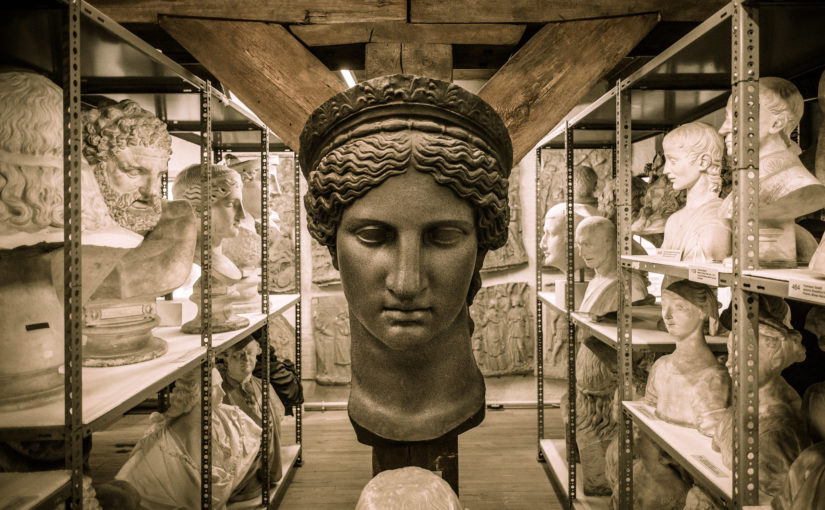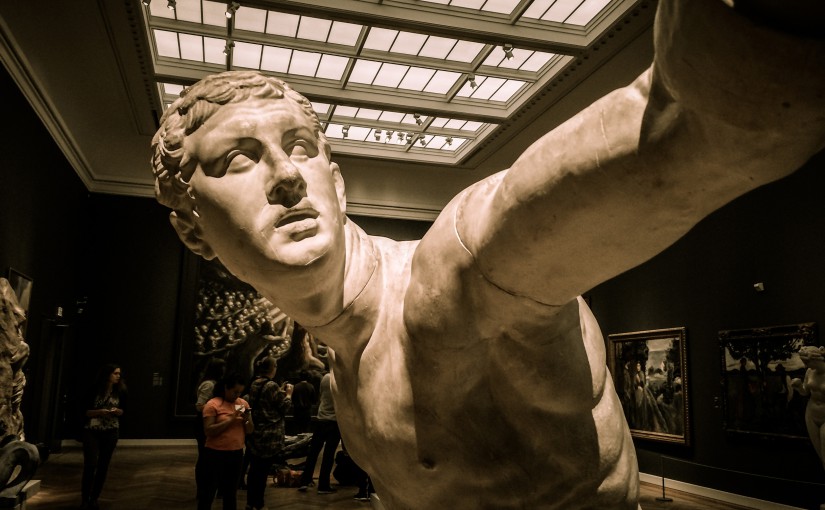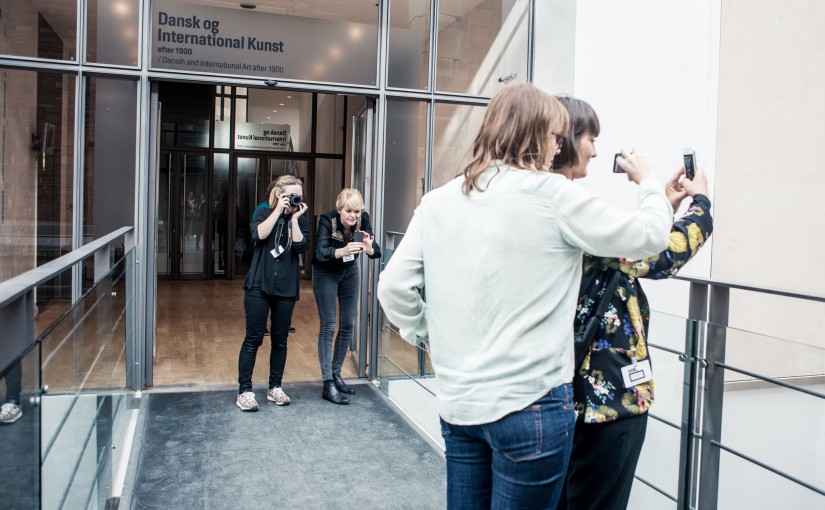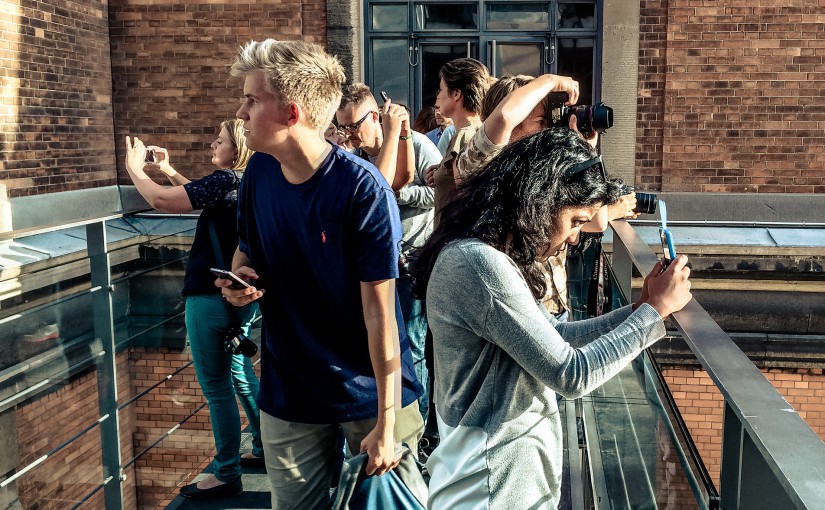Kommentar bragt i Politiken, 15/9-2019.
Hvert år overgår vigtig dansk kulturarv til frit fælleseje. Men vi fejrer det aldrig. Ja, tør vi overhovedet tale om det?
I dansk lov har vi to meget fine principper, men det er ofte kun det ene vi taler om, mens vi går i en lidt blufærdig bue udenom det andet.
Når en borger som du eller jeg udfører et stykke kreativt arbejde, så sikrer samfundet vores ret til at bestemme over dette arbejde. Når du komponerer en popsang, skriver et digt eller redigerer en lille film sammen på din mobiltelefon så får du – med det samme og ganske automatisk – retten til at bestemme over dit “værk”.
Men kun i et vist tidsrum. Og her kommer vi til det andet princip. På et tidspunkt ophører din eneret og dit værk overgår til fællesskabet. Det placeres, om man vil, i den store fælles pulje af kulturarv som vi alle frit og ubegrænset kan bruge nøjagtigt som vi vil. Og hvilket tidspunkt er det så? Det ved vi meget præcist: Eneretten til en kreativ frembringelse bortfalder ved midnat nytårsaften i det halvfjerdsindstyvende år efter ophavsmandens død. Stedet hvor værket herefter bor har ikke et godt dansk navn, men omtales ofte som “public domain”.
At fastsætte tidspunktet er simpelt. Alt andet omkring ophavsret er kompliceret. Hvorfor 70 år? Hvad er egentlig et værk (En SMS? En krusedulle på en post-it-seddel? Et fotografi af et andet fotografi?). Hvorfor overhovedet beskytte? Og hvorfor overhovedet ophæve beskyttelsen?Det er meget svært at besvare disse spørgsmål med henvisning til alment accepterede principper. Ophavsret er en sprængfarlig blanding af idealer, mere praktiske hensyn og temmeligt tvivlsomme definitioner. Læg hertil en stor bunke penge, og du har opskriften på det man kun med en yderst pæn omskrivning kunne kalde en “intens diskussion”.
Lad mig alligevel, midt i alle disse modsatrettede idealer, prøve at forklare, hvorfor den frie, fælles kulturarv er en utroligt god ide. Lad mig også illustrere, hvordan den desværre er under løbende angreb.
Hvorfor skal kulturarven være fri?
At have en pulje af fri kulturarv har altid været en god ide. H.C. Andersens eventyr, Søren Kierkegaards tekster, Vilhelm Hammershøis malerier og Carl Nielsens symfonier er for længst overgået til fællesskabet. Altså står det enhver frit for at gendigte, at filmatisere deres værker eller udgive dem i helt nye formater. Det står også enhver skolelærer, gymnasielærer eller universitetsunderviser frit for at fremvise og anvende dem i undervisningen. Og det står enhver skoleelev frit for at inkludere gengivelser af Hammershøis, P.S. Krøyers eller Anna Anchers malerier i sine skoleopgaver. Dette har været en god ide længe. Men i en digital tidsalder bliver det særligt meningsfuldt, da almindelige menneskers mulighed for at fremstille værker og udgive dem er vokset eksponentielt. De muligheder for at publicere tekster, billeder og video som før kun var kapitalstærke mediehuse forundt er i 2019 tilgængelige for helt gennemsnitlige danske børn. Der fremsøges, videreformidles, deles og gen-anvendes simpelthen i hidtil uset grad.
Hver nytårsaften udvides puljen af frit anvendelig dansk kulturarv som med et trylleslag kl. 24. Hver gang underbygger, forstærker og forbedrer vi øjeblikkeligt dette (delvist nye) kredsløb. Og dette er ikke kun fordelagtigt for individuelle borgere. Hver gang udvides de danske kulturinstitutioners muligheder for at formidle kulturen – de bliver med andre ord bedre i stand til at udføre deres job. Kunstmuseer kan formidle deres samlinger frit, og danskerne kan dermed få nemmere adgang til kulturarven.
Men… for der er et “men”. Hvis det er så rosenrødt, hvorfor fejrer kulturpolitikere, museer og kulturglade borgere så ikke denne årlige begivenhed, mens de alligevel svinger champagneglasset? Nok fordi det (også) er et minefelt. Stærke, kommercielle kræfter trækker i den anden retning. Organiserede rettighedshavere udøver målrettet lobbyisme for at udvide ophavsretten og undgå åbenhed. En ting er vigtig at pointere her: At organisationer lobbyer for deres medlemmers interesser er absolut legitimt. Hvis man er Disney vil man gerne fortsat tjene penge på Mickey Mouse. Hvis man er sat i verden for at sikre forfattere bedst mulige indtjeningsmuligheder, så synes man næsten per definition, at ophavsretten bør være både robust og langvarig.
Problemet er ikke, at de professionelle rettighedshavere er velorganiserede. Problemet er at diskussionens “anden side”, altså brugerne og kulturformidlerne er totalt uorganiserede og endda ofte internt splittede.
Lad mig give to eksempler fra den forløbne sommer.
Det første handler om en uskøn disputs mellem den amerikanske designer Cosmo Wenman og Baltimore Museum of Art (BMA). En disputs som nåede helt til den franske regering, før den endelig blev afklaret.
I 2014 havde BMA proklameret, at de ville 3D-scanne deres eksemplar af Auguste Rodins ‘Grubleren’ og dele denne scanning med verden. Rodin døde i 1917 og ‘Grubleren’ er således uden for ophavsret.
Wenman ville gerne bruge denne scanning og spurgte derfor, tre år senere, hvor den blev af. Dette medførte en lang og ordrig email-diskussion, som endte med at BMA ikke ville frigive scanningen medmindre det parisiske Rodin-museum godkendte det. Dette startede en ny ord-krig, denne gang på tværs af Atlanten. Til sidst henviste Rodin-museet til det franske Kulturministerium og da Wenman fortsatte sit pres, afgjorde en fransk regeringsinstans til allersidst – to år efter den første email – at Rodin-museet ikke kunne undlade at udlevere deres scanninger. Det er dog endnu ikke sket. Pointen med denne historie er vel, at ikke engang kulturinstitutioner per automatik støtter fri og åben kulturarv.
Midt under Wenmans kamp om ‘Grubleren’ vedtog EU et meget omdiskuteret nyt ophavsretsdirektiv. Den komplekse lovtekst kan udlægges på mange måder, men på mange områder var den en sejr for klassiske rettighedshavere, altså film-, forlags- og musikbranchen med flere.
Ét åbenhedstiltag nåede dog med: princippet om at direkte gengivelser af ophavsretsfrie værker også selv er ophavsretsfrie. Et eksempel: Hvis jeg, uden at tilføje et kreativt element, tager et foto af et Hammershøi-maleri, så er dette foto ikke beskyttet af ophavsret. Det lyder måske beskedent, men det vil faktisk være af stor betydning for kulturformidlere og vil frigive en masse ressourcer til puljen af fri kulturarv. Dog er CEPIC, som organiserer 600 europæiske foto-agenturer, rasende. Organisationen advarer kraftigt mod dette tiltag i en pressemeddelelse, sætter “åbenhed” i tykke gåseøjne og advarer om, at det hele må skyldes lyssky lobbyvirksomhed fra amerikanske tech-giganter. En usædvanligt krigerisk og meget tvivlsom udmelding, som selvsagt har et klart formål: At skræmme alle politikere, der i disse år skal implementere det nye direktiv i national lov, væk fra åbenhedsprincippet.
Hvem diskuterer offentligt med CEPIC og ligesindede? Tja, hvis du støder på nogen, så giv mig gerne et praj.
Nej, den frie fælles kulturarv har næsten ingen venner. Men er det ikke på tide, at vi slår et slag for den kulturelle fælled? At kulturbranchen husker at fejre og støtte fri adgang til kulturen? At kulturpolitikere husker den frie kultur i deres nytårstaler? Og at vi som borgere husker at glæde os, hver gang den frit tilgængelige del af vores fælles kulturarv bliver en lille smule større?










